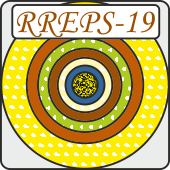Speaker
Description
Vortex electrons are freely propagating particles that carry orbital angular momentum (OAM) ℓ with respect to a propagation axis and its values, obtained experimentally, already reach ℓ ~ 1000 ℏ. In contrast to the ordinary beams, such twisted electrons possess an additional magnetic moment, an electric quadrupole moment, as well as higher multipole moments. These moments can be controlled by varying the packets’ width and the OAM and can be made quite large, which influences electromagnetic field of the particles. As a result, interaction of the vortex electrons with external fields and with matter differs from that of the ordinary electrons, which may lead to relatively easily noticeable effects in electromagnetic radiation and scattering.
Here we obtain electromagnetic field of a relativistic vortex electron, described as a generalized Laguerre-Gaussian packet, in a form of a multipole expansion with an electric quadrupole term kept. The quadrupole contribution is attenuated in a paraxial regime, when the electron packet is large compared to its Compton wavelength, but it is enhanced at large OAM as well as at large times (low frequencies), when the packet’s spreading is essential. For typical parameters of the available vortex beams, the frequencies for which the contribution of the quadrupole becomes comparable to that of the magnetic moment lie below the optical part of the spectrum – in IR- and THz range. We discuss several possibilities to observe the non-paraxial effects in radiation processes due to these new multipole moments.
